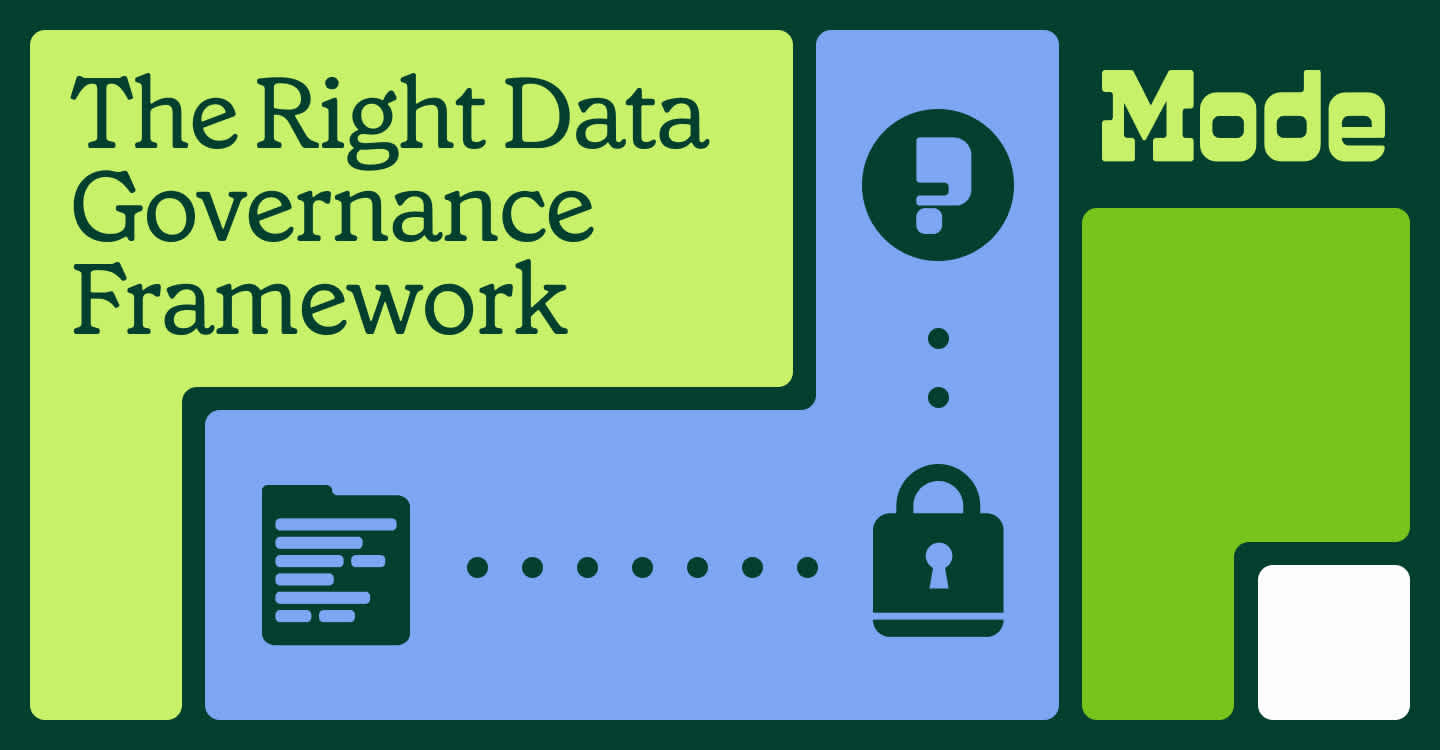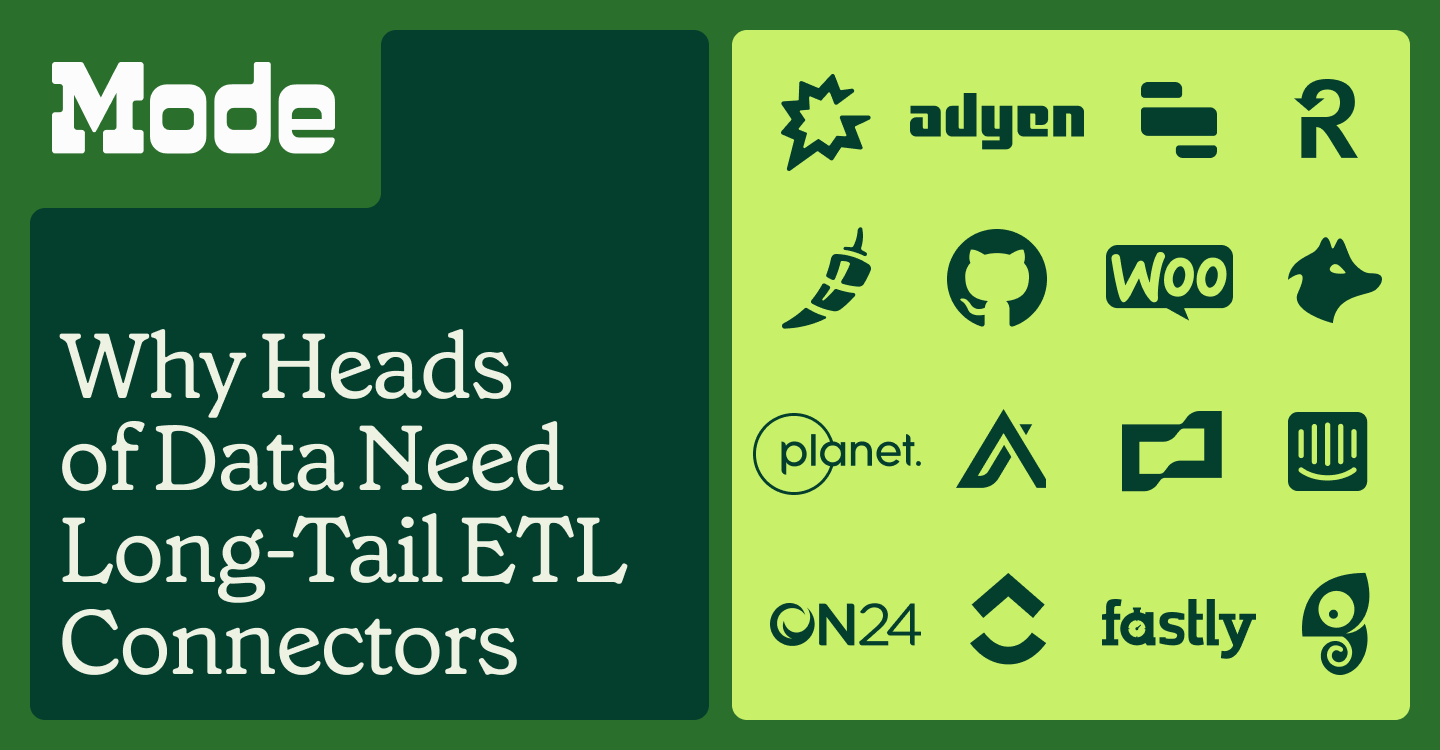In this day and age, every company needs an analytical decision-making culture. Every company needs to be data-driven. And not someday. Every company needs to make analytical decisions every day, starting from day one.
The problem is, the process of actually becoming analytical isn't just a technical job. It's the mental and cultural challenge where most companies stumble. Like all good habits, it's hard to start.
If you didn't think about analytics on day one, you're not alone. The good news is, it's not too late to start. The earlier a company starts building an analytical decision-making culture, the easier it will be and the better it will stick. There are two simple principles to follow to get started:
Don't Leave for Tomorrow That Which Can Be Done Today
All too frequently, we encounter early-stage companies that assume the tooling required for data analysis will be too expensive, or too sophisticated, or that they'll have to get locked into a relationship with a monolithic vendor. That may have been the case years ago, but no more. Analytics tooling is becoming increasingly modular and accessible. Getting a simple data stack up and running can be done in a day, and you can independently improve the pieces of that stack as you grow.
Another common hesitation we hear is an assumed lack of data. Early-stage businesses, especially young tech startups, frequently believe that they simply don't yet have enough data for it to be worth investing time into analytics. This is understandable, given the plethora of imaginable data that could one day be acquired. But in early-stage analytics, nothing will be perfect. You will always have a wish list, whether it be more teammates with data savvy, more reliable data, more data sources, or more powerful analytics tools. This doesn't mean you should wait to start asking and answering questions. With just a product and a website, you can collect plenty of valuable data that can absolutely help improve your business.
Basic analysis can be set up on day one. Useful insights can be found on day two. In Mode's earliest days, when the only data we had to examine was product usage and Google Analytics, we found a page in our signup flow with an 80% drop-off rate. Had we waited to identify and address opportunities like this, we would have missed out on many early users.
Don't wait. Start small. Improve as you go.
Don't Let Great Be the Enemy of Good
The biggest problem with letting hesitation around tooling slow you down is that tooling is hardly the complete picture. It's the people using the tools that provide the curiosity and creativity for asking and answering questions. The way teams go about doing that typically plays out in a couple of ways.
When businesses first start out in analytics, they typically don't already have a data team in-house. So they'll task individuals to handle analytics within their own domains. Marketing leads will own marketing analytics, product leads will own product analytics, etc. Though these domain experts bring valuable first-hand experience in their respective fields, they often lack deep analytical expertise. This can lead to a penchant for using data strictly as a supplement to intuition when making decisions. In these cases, though the company may consider themselves to now be “data driven”, business outcomes are about the same as they were before.
In other cases, a business will hire someone with a background in more sophisticated analysis to build their analytics initiative. In these cases, that person's instinct is typically to interrogate data until the findings are perfect. Perhaps, in their past roles, they were held to a very high threshold of confidence in their analysis, and had to spend lots of time optimizing tests, or verifying data, or collecting a larger dataset. For a company just starting out with analytics, there is absolutely such a thing as diminishing returns.
Too little analysis, and decisions aren't improved. Too much analysis, and decisions aren't made at all. The middle ground between these two cases is the goldilocks zone of early-stage analytical decision-making. Startups receive diminishing returns on analysis once an answer has reached “good enough”.
Analytics should help you move faster and be smarter, not add roadblocks. The principle of “decide and move forward” gets your analytics practice moving in the right direction from day-one. Looking to hire a data team to jump-start your analytics project? Post your job to the Data Jobs Board.






